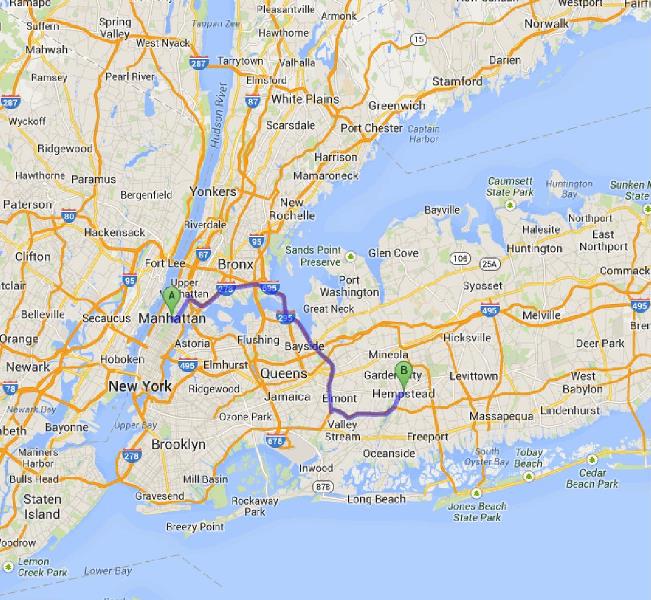
Today is the four year anniversary of the ASPCA’s killing of Oreo, an abused dog, who a No Kill sanctuary offered to save. After Oreo was killed, legislation was introduced in New York which would have made it illegal for shelters, including the ASPCA, to kill animals who rescue groups were willing to save. It was estimated that if the law passed, 25,000 animals a year would be saved. Ed Sayres, the former CEO of the ASPCA made it his personal mission to ensure that the law would not, killing it in the legislature every year. Since Oreo was killed, an estimated 100,000 animals who also had an immediate place to go, have also been killed. Instead of enjoying the second chances and loving new homes non-profits rescue groups would have guaranteed them, they are dead, their bodies rotting in New York State landfills.

Recently, in what was a promising turn of events, Sayres left the ASPCA under a cloud of mismanagement and the ASPCA released a statement which seemed to endorse rescue access rights, telling shelters in California that, “Taking early action to divert animals from probable euthanasia to rescue groups deserves to be common practice.” On September 18, I reached out to Matt Bershadker, the new CEO of the ASPCA asking him to work with me to pass a rescue rights law in New York consistent with the new ASPCA statement. Here is the language of that letter:
September 18, 2013
Matthew E. Bershadker
President, ASPCA
424 E 92nd St
New York, NY 10128-6804
Dear Matthew,
I write with a plea and a proposal. This November marks the four year anniversary of Oreo’s death, even though she had a safe and loving place to go. On November 13, 2009, Oreo was killed; not by her abuser, but by the ASPCA whose mission it was to protect her. The kennel that the sanctuary readied in anticipation of her arrival lay empty and unused that day, filled with a soft bed, a pool of water and several toys for her to play with. Instead, Oreo’s body was discarded in a landfill.
Subsequent to her death, legislation was introduced that would have made it illegal for New York State shelters to kill animals who have a place to go. Although Oreo’s death was the catalyst, the legislation was—and is—desperately needed statewide. A survey of New York State rescue groups revealed that 71 percent had been turned away from shelters, which then killed the very animals they had offered to save. In one case, a rescuer described how the shelter manager specifically walked a dog her group wanted to save right past them and into the room where animals are killed.
Modeled after a very successful bill in California, it was estimated that if “Oreo’s Law” passed, roughly 25,000 animals a year—most of them young, friendly and healthy—would be saved rather than killed by New York shelters. Since California passed such a law, the number of animals transferred to rescue groups rather than killed went from 12,526 to 58,939—a 370% annualized increase because shelters were now required to work with rescue groups. Nonetheless, Ed Sayres—spiteful over the backlash against his killing of Oreo—declared that he would use his leverage in the State Capitol to defeat the bill.
In January of 2010, I wrote Sayres and informed him that the bill would be amended to include additional, though unnecessary, safeguards against hoarders and dog fighters, include liability protection for shelters (once again unnecessary as this is already part of NYS law), and clarify the definition of irremediable physical suffering. But for the ASPCA’s face-saving purposes, we also proposed renaming the bill, ceasing all reference to Oreo as it relates to this bill, offering to allow the ASPCA to take credit for the law, and, to the extent that the ASPCA did not want our support or involvement, to offer our withdrawal.
I begged him not to sacrifice the animals to a personal vendetta against those who were distraught over the ASPCA’s killing of Oreo and then just a few weeks later, another dog in ASPCA custody who rescuers offered to take, Max.
I wrote:
The lives of thousands of animals across NYS being killed despite rescue groups offering to help should not be pawns in your calculations. You have the power to help this bill succeed—to save the lives of thousands upon thousands of animals in New York State, to lead the effort for a No Kill New York, and to establish a precedent for other states to follow. This offer also comes with the power to end discussion of Oreo as it relates to this law once and for all. For the animals, Ed, please take it.
He refused. And although the public support for the bill was overwhelming, with emails to New York legislators shutting down the servers in the Assembly twice, the amended bill was tabled—and has been tabled at the ASPCA’s behest every year—since that time, sending nearly 100,000 animals to their deaths, rather than into the protective embrace of rescue groups and ultimately into the loving arms of families. To put that into perspective, that is enough bodies to fill every seat at Yankee stadium twice. If they were instead lined up end to end, the trail of dead bodies would be almost 30 miles long.
To add insult to injury, Sayres turned around and introduced a cynical bill of his own, which—though billed as a rescue access law—would have done little on that score but codify the status quo, while giving shelters even more power to kill animals, eviscerating some of the few protections animals in shelters have had in New York State (and have been in place for over 40 years).
Recently, and following his departure, however, the ASPCA signed on to a statement embracing the very approach for California that it has fought in New York. The ASPCA, and others, write,
Taking early action to divert animals from probable euthanasia to rescue groups deserves to be common practice. When agencies wait until the end of the holding period to begin the process of coordinating with rescue groups, they may create unreasonable deadlines for rescue groups to save animals. For example, the rescue group may have only 12 to 24 hours before the shelter euthanizes the animal. In some cases that limited amount of time is not feasible for the rescue group to take the animal for placement. In addition, the longer animals linger in shelters, the more likely they are to get sick and become less suitable for adoption or transfer. Shelters can save more lives by resolving to partner with rescue groups and contacting them as early as possible for potential transfers. When shelters give more notice, including what animals are becoming available and when they will be released, rescues can determine if they will have space; arrange foster care, if needed; and begin to promote the dogs and cats for adoption. For the partnership to benefit animals, the transfers should include dogs and cats who the rescue is in a better position to place. These animals may need additional time or investment for health or behavior issues that the shelter cannot provide, but a rescue organization can. Sometimes an agency may just seek relief from the sheer number of incoming animals.
The ASPCA went on to endorse the idea that, “Shelters should maintain a system, such as a listserv[e] (opt-in email list), to notify rescue groups of animals who need placement.” The change in rhetoric is welcome, but given the ASPCA’s history of fighting laws that mandate these very procedures in New York, proof of its sincerity requires a change in practice.
Matthew, it is my understanding that you took umbrage at my blog post, The Company Man, decrying your appointment as the ASPCA president. I am writing to extend an olive branch, to give you the opportunity to prove me wrong. I am writing to ask that the ASPCA and the No Kill Advocacy Center partner to submit the enclosed “Rescue Rights Law” in New York State. The proposed law is strong, effective, thoughtful, desperately needed and entirely consistent with the statements the ASPCA endorsed for California as necessary to save the lives of animals facing unnecessary death.
Help me pass the law, without cynical amendments that would render it a paper tiger or merely symbolic, and I will be the first to admit I was wrong about you. But more than that, and regardless of what you make think of me, and vice-versa, it would save the lives of tens of thousands of animals in New York State shelters each and every year which is, after all, the mission for which the great Henry Bergh founded the ASPCA.
Will you help me do that?
He did not reply. And so on October 15, I reached out again:
October 15, 2013
Matthew E. Bershadker
President, ASPCA
424 E 92nd St
New York, NY 10128-6804
Dear Matthew,
Enclosed please find my letter to you of September 18 to which I have not received a reply. Once again, I am writing to ask that the ASPCA and the No Kill Advocacy Center partner to submit the enclosed “Rescue Rights Law” in New York State. The proposed law is strong, effective, thoughtful, desperately needed and entirely consistent with the statements the ASPCA endorsed for California as necessary to save the lives of animals facing unnecessary death.
Matt, please help me save lives.
As of yesterday, I still have not received a reply. It has been nearly two months. Matt Bershadker has indicated he is his own man and not intent on following Sayres’ prior policies. That remains to be seen. I do not know if he intends to respond or not. I do not know whether he will help me save lives. And I do not know whether he plans on championing true rescue rights as his statement in California did not change anything: California has had a rescue rights law since 1998 so his statement in support was legally irrelevant. But there are two things I am certain about. Every day we delay in passing a rescue rights law in New York State, the body count increases. Second, the ASPCA holds the key to getting such a law passed and Matt Bershadker has that key in his pocket. The ASPCA enjoys tremendous leverage in the legislature (it was created by the New York State legislature and has a working relationship dating back to the 19th Century), the Chair of the Assembly Agriculture Committee is beholden to the ASPCA, the Codes Committee will pass it, and the relevant Senate committees have already indicated their willingness to do so.
It is not easy to conceptualize 100,000 dead dogs and cats, animals who would have been saved had Oreo’s Law and its subsequent iterations not been killed by the ASPCA. But if you were to weigh them, they would weigh 2,250,000 pounds, the equivalent of three 747s.



If you were to put a dead body in each seat at Yankee stadium, they would fill the entire stadium: twice.


If they were lined up end to end, the trail of dead bodies would be 30 miles long. It would take you 12 hours of walking to see them all.

Scroll through 100,000 paws, one for each animal estimated to be killed who had a rescue group ready, willing and able to save them.
At one point, the animals killed led straight to Sayres’ door. Now, they lead to Matt’s. And it ends whenever Matt Bershadker says it ends. As always, I remain ever willing and able to help him do so.
————-
Have a comment? Join the discussion by clicking here.
Here is my story: www.nathanwinograd.com/?p=11902
And this is my vision: http://vimeo.com/48445902
